Mechanical Characteristics of Superhigh-Water Content Material Concretion and Its Application in Longwall Backfilling
Abstract
:1. Introduction
- (1)
- Various backfilling materials have been developed based on CPB. In the early 1980s, a mixed cementation material was developed which was called Aquapak that can be solidified with a volume ratio of water up to 85%. This work laid the foundation for subsequent research and development of high-water backfilling materials [3,4]. Sun et al. [5] developed a high-water rapid-setting material with a water volume ratio up to 90%. By improving the sand-soil solidifying backfilling material, they developed a sialite paste-like backfilling material along with another material called Ningtaike-A. Feng et al. [6] developed a type of superhigh-water backfilling material that features a high water content, controllable strength and setting time, as well as sound fluidity of single slurry.
- (2)
- Systematic studies have been carried out on the mechanical properties and influencing factors of CPB. Arioglu [7] proposed a formula for calculating the strength of CPB based on the field conditions and the characteristics of CPB. Thomas model is designed to predict the vertical stress at the bottom of CPB [8]. Cui and Fall [9] proposed an evolution elasto-plastic model for CPB. Fall et al. [10] established a water conductivity function model for CPB. Yi et al. [11] improved the ductility of CPB by adding in polypropylene fiber. Klein, Simon, and Hughes et al. used shear wave velocity tests [12], in-situ tests [13], and electromagnetic wave detection [14], to analyse the compressive strength [15], hydration process, and curing time of CPB that contained different cementing agents [16]. Sheng Huang, Fall M., and Nasir O. studied the effects of strain rate, curing time, and mixture ratio on the compressive strength of CPB [17,18,19].
- (3)
- Experimental studies have been conducted on the fundamental physical properties of CPB. Ghirian and Fall [20] systematically studied the changes in the physical characteristics of CPB including thermal conductivity, pore-water pressure, shear strength, and microstructure under multi-field coupling effect at early curing times. Celestin and Fall [21] and Ouellet et al. [22] analysed the influential factors of the thermal conductivity of CPB and the evolution process of its microstructure, respectively; Ercikdi et al. [23] and Yilmaz et al. [24] proposed a method of quickly evaluating compressive strength using ultrasonic waves that used statistical analysis of the velocity of ultrasonic waves through the CPB under various water-cement ratios and sizes.
2. Mechanical Behaviour of the Backfilled SCMC
2.1. The Micro-Characteristics of SCMC
2.2. Engineering State of SCMC Using Open-Type Backfilling
2.3. Stress State of SCMC Using Pocket-Type Backfilling
3. Laboratory Testing
3.1. Experiments Facilities and System Setups
3.2. Samples Preparation
- Specimens subject to partly confined compression stress (early stage of backfilling, within 24 h): 324 cube specimens (100 × 100 × 100 mm), one-half with a water volume percentage of 95% and one half with a water volume percentage of 94%, were prepared and cured for 2 h, 8 h, and 24 h.
- Specimens subject to completely confined compression stress (late stage of backfilling, after 24 h): 160 cylinder specimens (Φ = 50 mm, h = 100 mm) in 20 groups, one-half with a water volume percentage of 95% and one-half with a water volume percentage of 94%, were prepared and cured for 1 day, 3 days, 5 days, 7 days, 9 days, 15 days, 19 days, and 20 days.
3.3. Testing Method and Process
4. Analysis of Experiments Results
4.1. Mechanical Properties of SCMC with Different Cementation States
4.2. Deformation Behaviour of SCMC under Confined Compression
4.3. Creep Property and Scale Effect of SCMC
5. Application of SCMC Mechanical Characteristics in Longwall Backfilling
5.1. Back Filling Rate and Backfilled Body Strength Design
5.2. Impacts of SCMC Backfilling on Ground Control
6. Discussion
7. Conclusions
- (1)
- The mechanical properties and scale effect of SCMC was studied in the experimental test. It was found that the compressive and tensile strengths of SCMC at different cementation states increase with curing time; the strengths of SCMC that was mixed with gangue are higher than that of pure SCMC. Under the conditions of partly and completely confined compression, the specimens show an increase of bearing strength and a decrease of deformation with curing time; and the specimens’ strength and critical deformation load are in inverse relation to the water volume percentage. Specimens with different scales generally follow the same stress-strain change rules, except in relation to compressive strengths and maximum deformation.
- (2)
- The engineering practice shows that, considering the engineering mechanical properties of cementation states and bearing characteristics of SCMC comprehensively, it can achieve better control effect of surface subsidence through optimizing the backfilling techniques parameters such as final strength and filling rate of backfilled body, according to specific geological and mining conditions.
Acknowledgments
Author Contributions
Conflicts of Interest
Abbreviations
| CPB | cemented paste backfill |
| SCMC | Superhigh-water Content Material Concretion |
| SCM | Superhigh-water Content Material |
| BF | Backfilling face |
References
- Lv, W.Y.; Zhang, Z.H. Current situation and prospect of coal backfill mining. Technol. Adv. Mater. Res. 2012, 524, 421–425. [Google Scholar] [CrossRef]
- Zhang, J.X.; Zhang, Q.; Sun, Q.; Gao, R.; Germain, D.; Abro, S. Surface subsidence control theory and application to backfill coal mining technology. Environ. Earth Sci. 2015, 74, 1439–1448. [Google Scholar] [CrossRef]
- Johnson, G.; Kellet, W.H.; Mills, P.S. Aquapak: A cementitious pack material with high water content. In Proceedings of the International Strata Control Conference, Liège, Belgium, 20–24 September 1982. [Google Scholar]
- Buddery, P.S.; Hassani, F.P.; Singh, R.N. Study of Aquapak behaviour with reference to strata control requirements. Can. Geotech. J. 1984, 21, 621–633. [Google Scholar]
- Yao, Y.; Sun, H.H. A novel silica alumina-based backfill material composed of coal refuse and fly ash. J. Hazard. Mater. 2012, 213, 71–82. [Google Scholar] [CrossRef] [PubMed]
- Feng, G.M.; Ding, Y.; Zhu, H.J.; Bai, J.B. Experimental research on a superhigh-water packing material for mining and its micromorphology. J. China Univ. Min. Technol. 2010, 39, 813–819. [Google Scholar]
- Bharatkumar, B.H.; Narayanan, R.; Raghuprasad, B.K.; Ramachandramurthy, D.S. Mix proportioning of high performance concrete. Cem. Concr. Compos. 2001, 23, 71–80. [Google Scholar] [CrossRef]
- Thomas, E.G.; Nantel, J.H.; Notley, K.R. Fill Technology in Underground Metalliferous Mines; International Academic Services Ltd.: Kingston, ON, Canada, 1979. [Google Scholar]
- Cui, L.; Fall, M. An evolutive elasto-plastic model for cemented paste backfill. Comput. Geotech. 2016, 71, 19–29. [Google Scholar] [CrossRef]
- Fall, M.; Adrien, D.; Célestin, J.C.; Pokharel, M.; Touré, M. Saturated hydraulic conductivity of cemented paste backfill. Miner. Eng. 2009, 22, 1307–1317. [Google Scholar] [CrossRef]
- Yi, X.W.; Ma, G.W.; Fourie, A. Compressive behaviour of fibre-reinforced cemented paste backfill. Geotext. Geomembr. 2015, 43, 207–215. [Google Scholar] [CrossRef]
- Klein, K.; Simon, D. Effect of specimen composition on the strength development in cemented paste backfill. Can. Geotech. J. 2006, 43, 310–324. [Google Scholar] [CrossRef]
- Hughes, P.B.; Pakalnis, R.; Deen, J.; Ferster, M. Cemented paste backfill at Stillwater Mine. In Proceedings of the 47th US Rock Mechanics/Geomechanics Symposium 2013, San Francisco, CA, USA, 23–26 June 2013; Volume 2, pp. 1230–1236. [Google Scholar]
- Klein, K.; Simon, D. Electromagnetic properties of cemented paste backfill. J. Environ. Eng. Geophys. 2006, 11, 27–41. [Google Scholar] [CrossRef]
- Simon, D.; Grabinsky, M. Apparent yield stress measurement in cemented paste backfill. Int. J. Min. Reclam. Environ. 2013, 27, 231–256. [Google Scholar] [CrossRef]
- Yilmaz, E.; Belem, T.; Bussière, B.; Mbonimpa, M.; Benzaazoua, M. Curing time effect on consolidation behaviour of cemented paste backfill containing different cement types and contents. Constr. Build. Mater. 2015, 75, 99–111. [Google Scholar] [CrossRef]
- Nasir, O.; Fall, M. Coupling binder hydration, temperature and compressive strength development of underground cemented paste backfill at early ages. Tunn. Undergr. Space Technol. 2010, 25, 9–20. [Google Scholar] [CrossRef]
- Huang, S.; Xia, K.W.; Qiao, L. Dynamic tests of cemented paste backfill: Effects of strain rate, curing time, and cement content on compressive strength. J. Mater. Sci. 2011, 46, 5165–5170. [Google Scholar] [CrossRef]
- Fall, M.; Beleni, T.; Sanib, S.; Benzaazoua, M. Experimental characterization of the stress-strain behaviour of cemented paste backfill in compression. J. Mater. Sci. 2007, 42, 3914–3922. [Google Scholar] [CrossRef]
- Ghirian, A.; Fall, M. Coupled behaviour of cemented paste backfill at early ages. Geotech. Geol. Eng. 2015, 33, 1141–1166. [Google Scholar] [CrossRef]
- Celestin, J.C.H.; Fall, M. Thermal conductivity of cemented paste backfill material and factors affecting it. Int. J. Min. Reclam. Environ. 2009, 23, 274–290. [Google Scholar] [CrossRef]
- Ouellet, S.; Bussiere, B.; Aubertin, M.; Benzaazoua, M. Characterization of cemented paste backfill pore structure using SEM and IA analysis. Bull. Eng. Geol. Environ. 2008, 67, 139–152. [Google Scholar] [CrossRef]
- Ercikdi, B.; Yilmaz, T.; Kulekci, G. Strength and ultrasonic properties of cemented paste backfill. Ultrasonics 2014, 54, 195–204. [Google Scholar] [CrossRef] [PubMed]
- Yilmaz, T.; Ercikdi, B.; Karaman, K.; Kulekci, G. Assessment of strength properties of cemented paste backfill by ultrasonic pulse velocity test. Ultrasonics 2014, 54, 1386–1394. [Google Scholar] [CrossRef] [PubMed]
- Wang, X.F.; Zhang, D.S.; Sun, C.D.; Wang, Y. Surface subsidence control during bag filling mining of super high-water content material in the Handan mining area. Int. J. Oil Gas Coal Technol. 2016, 13, 87–102. [Google Scholar] [CrossRef]
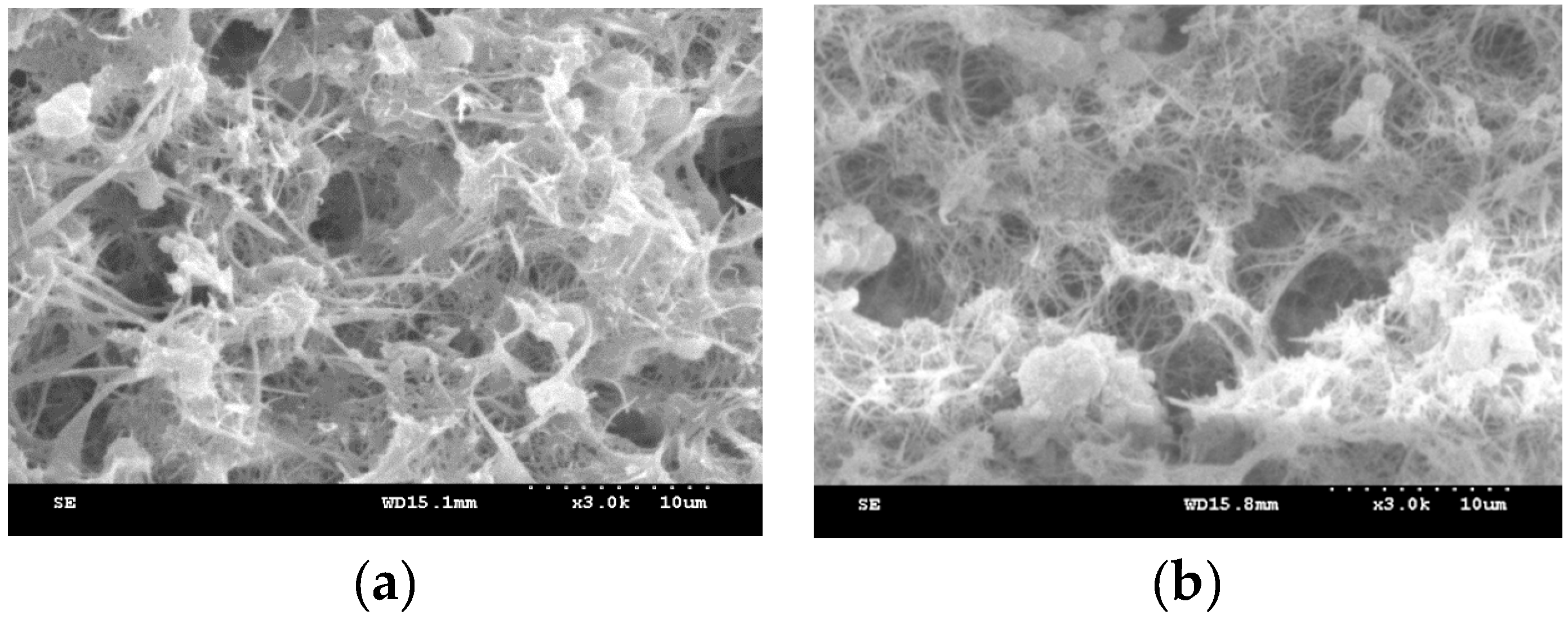
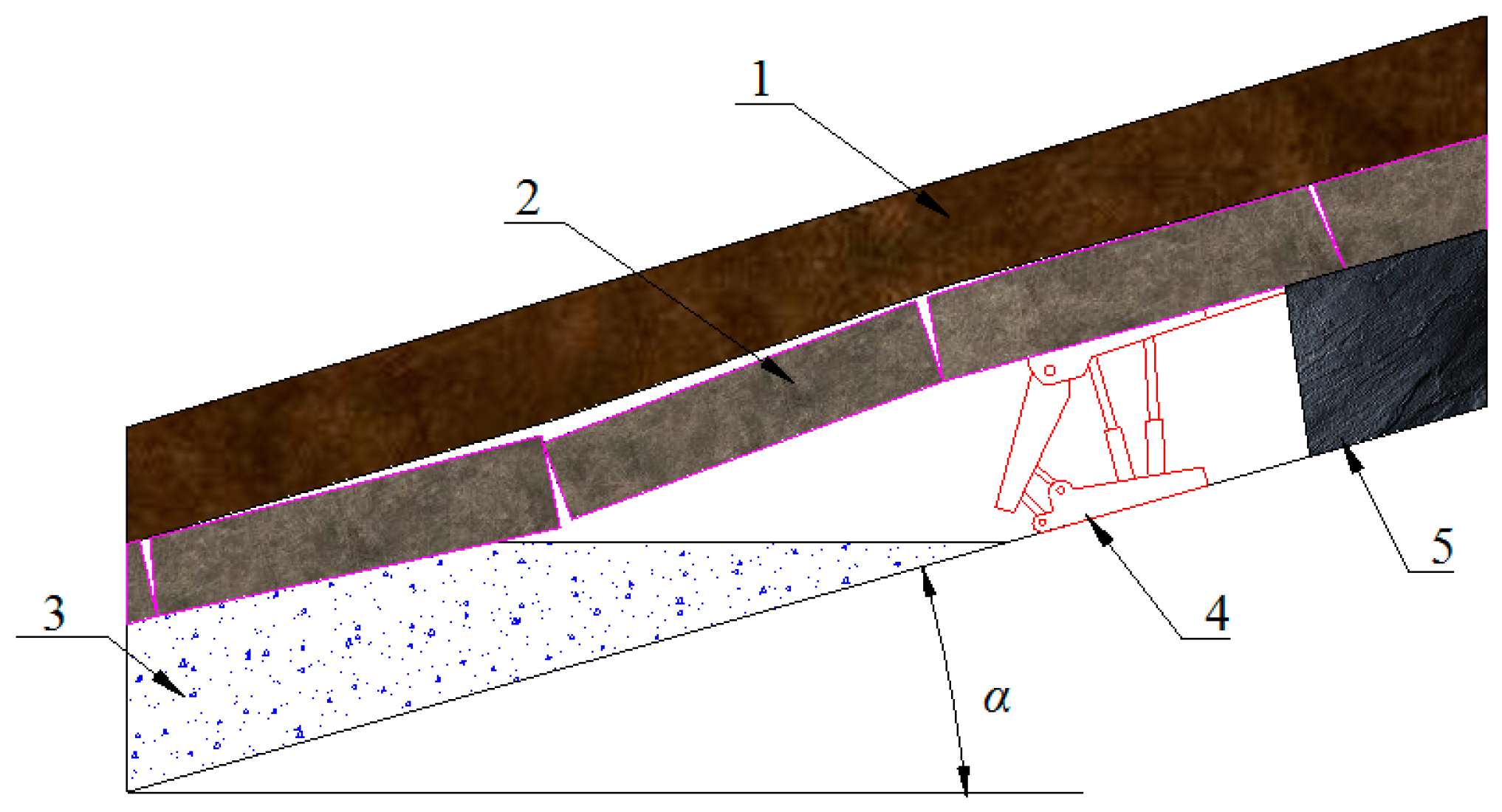


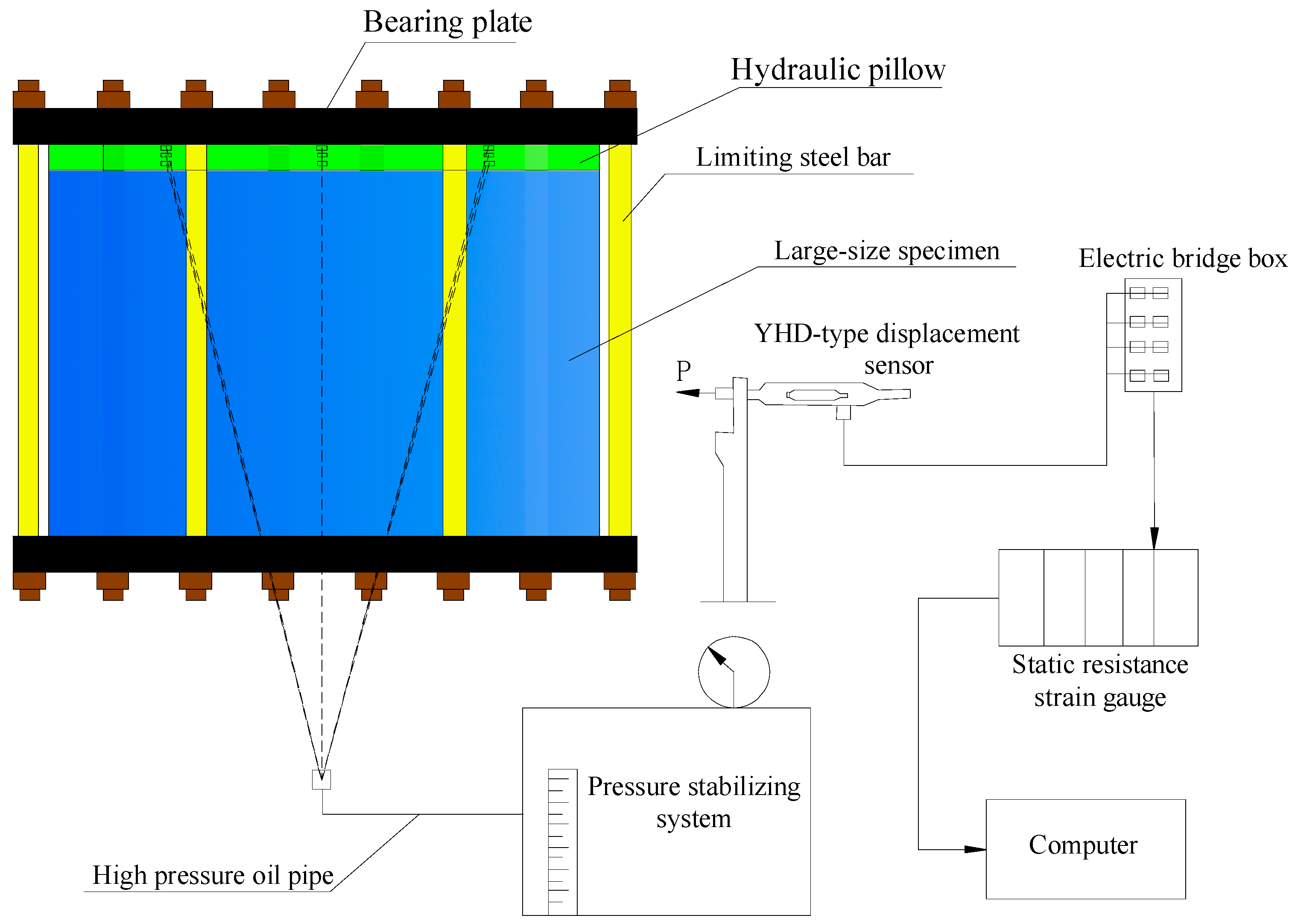
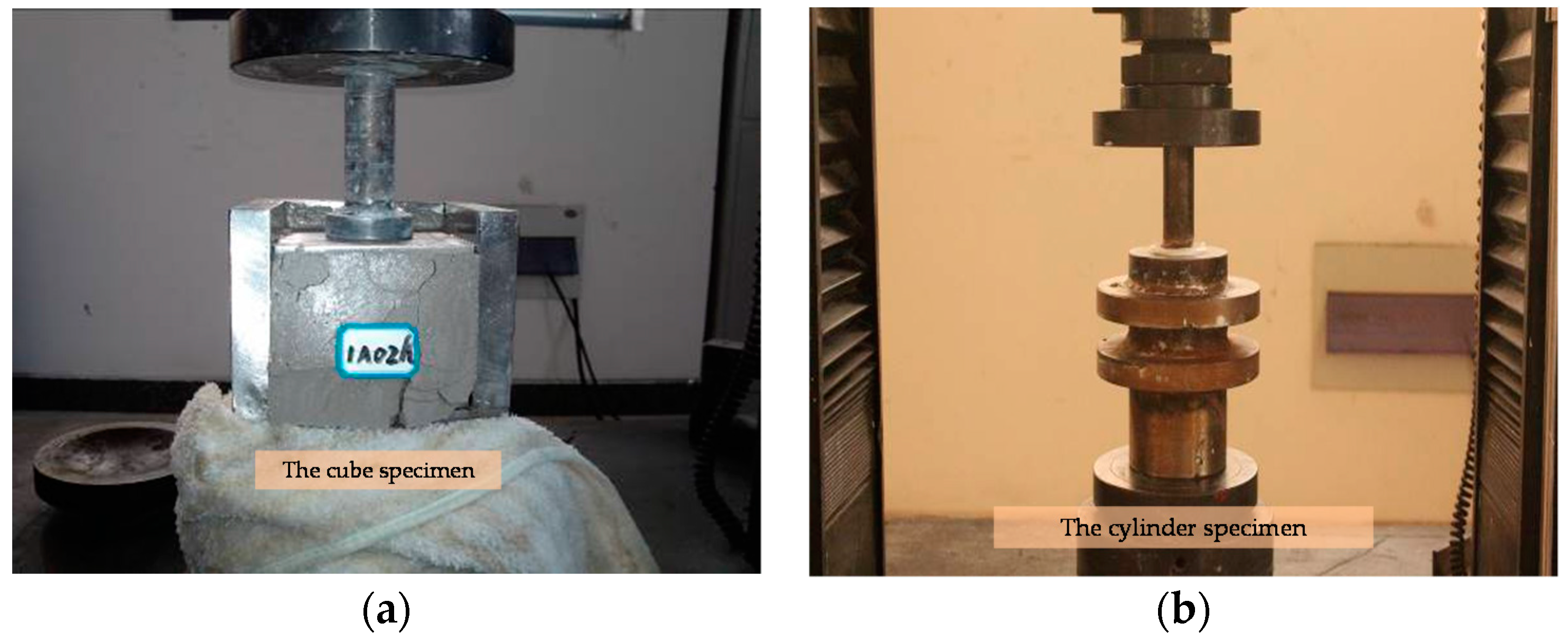
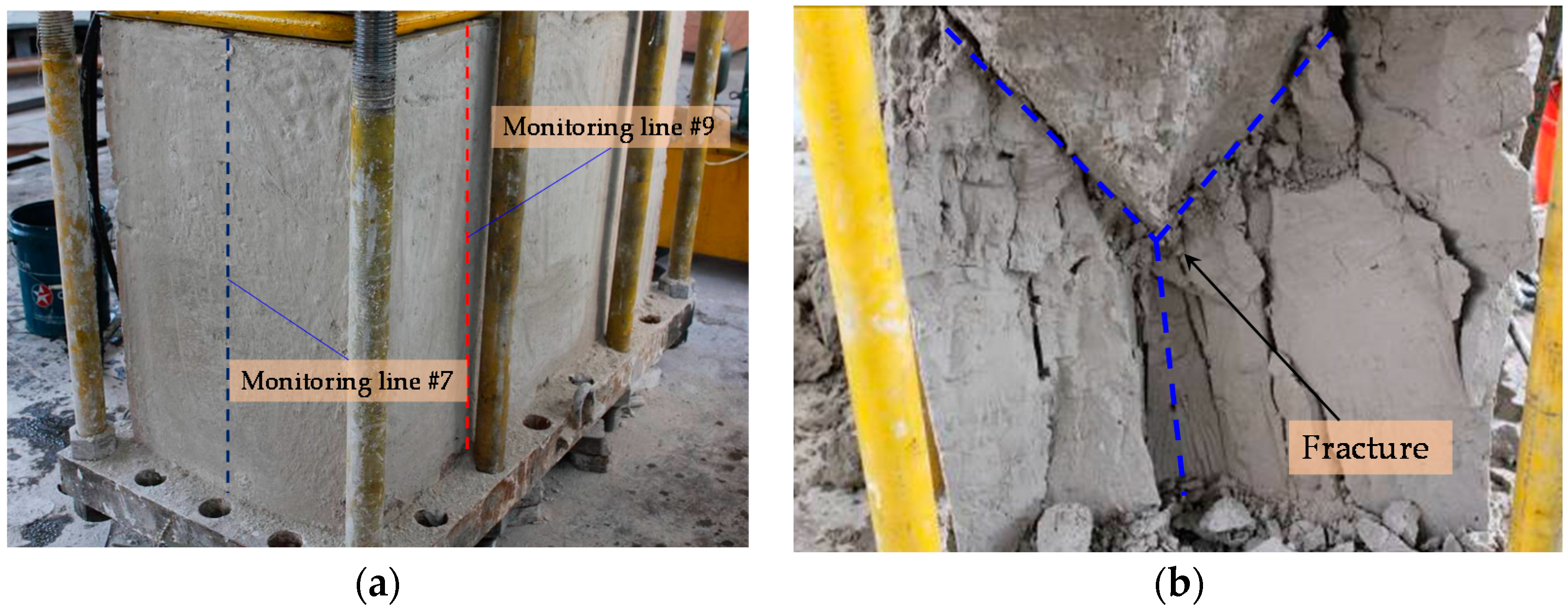
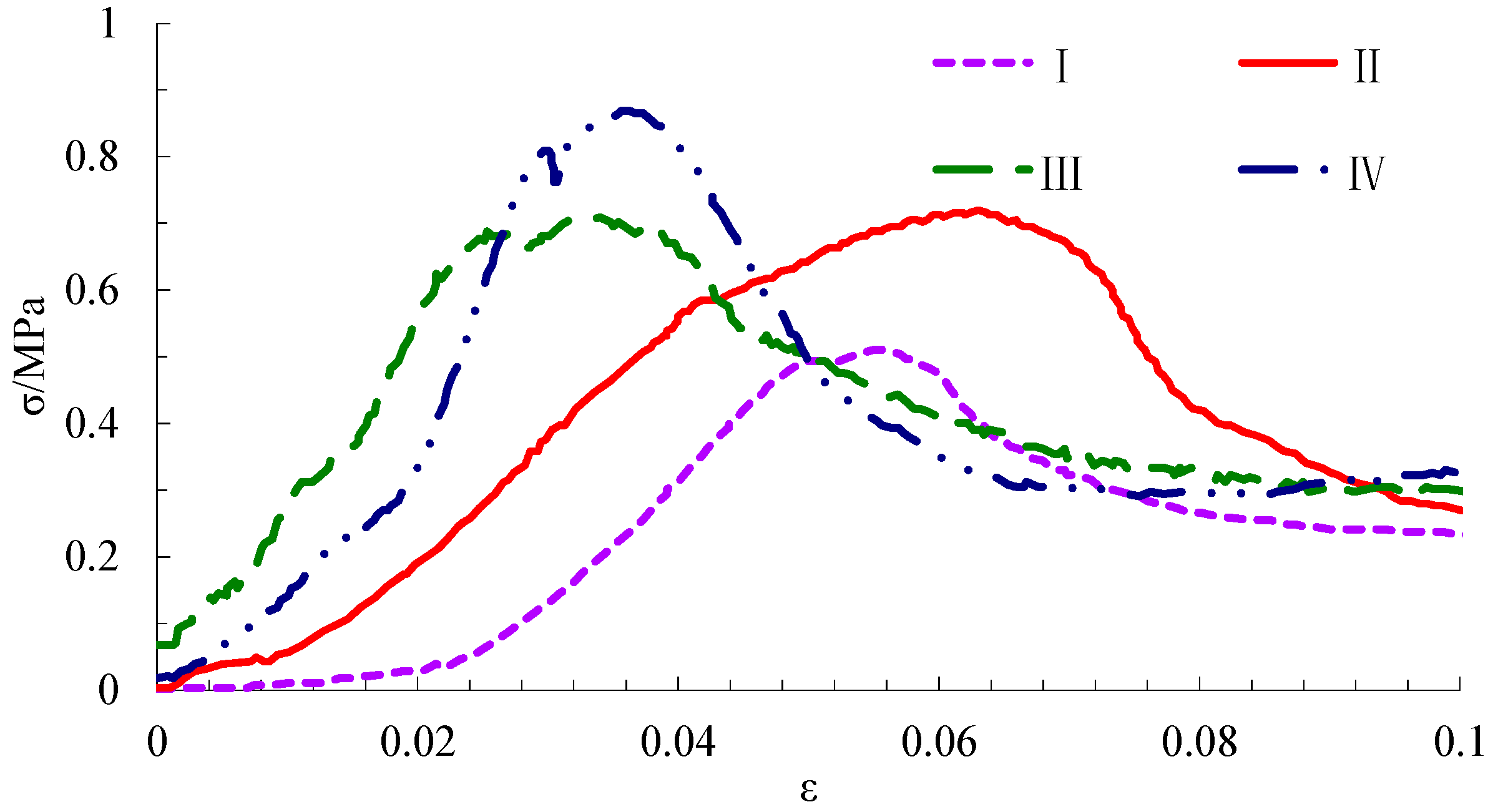

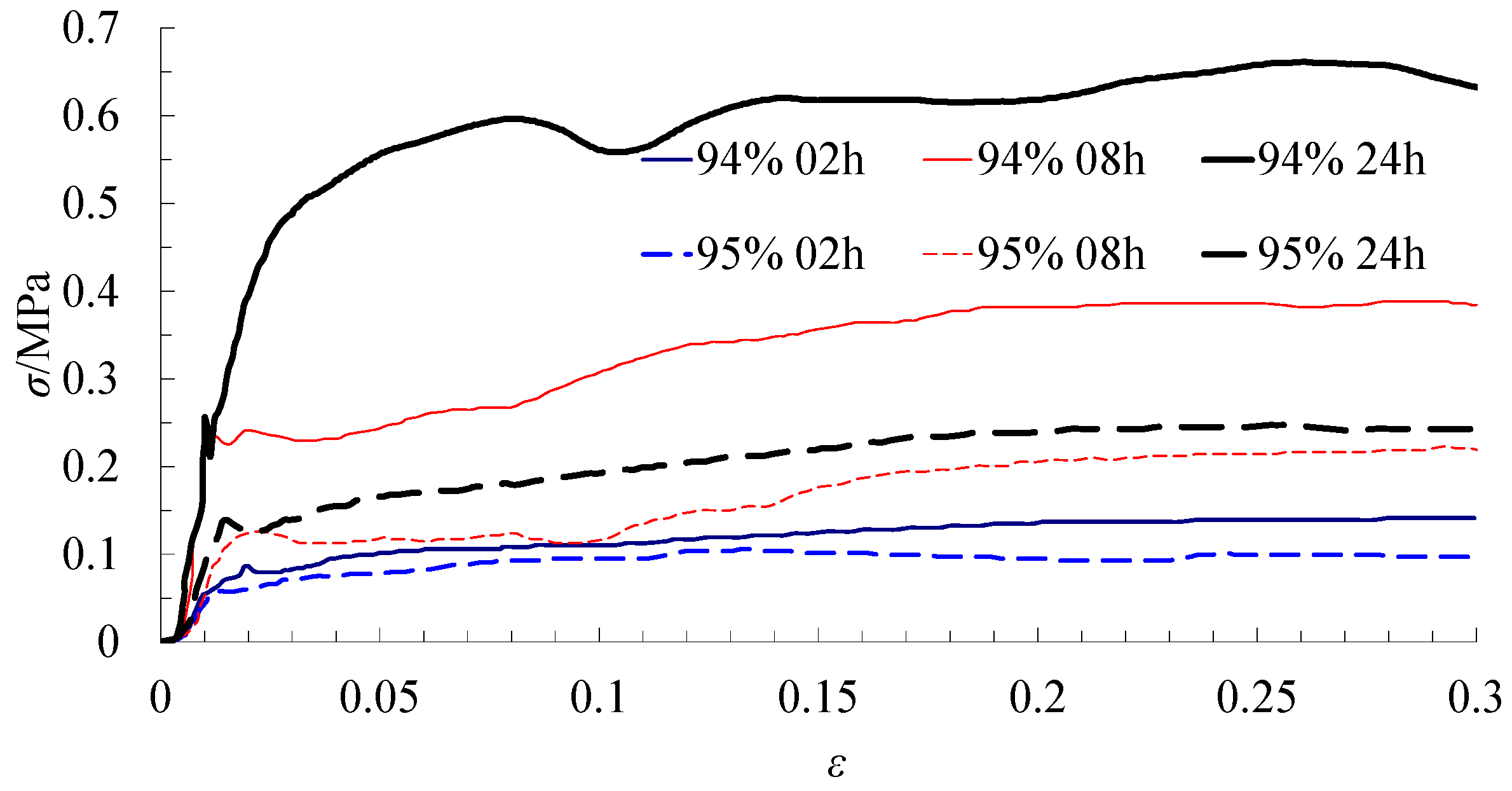
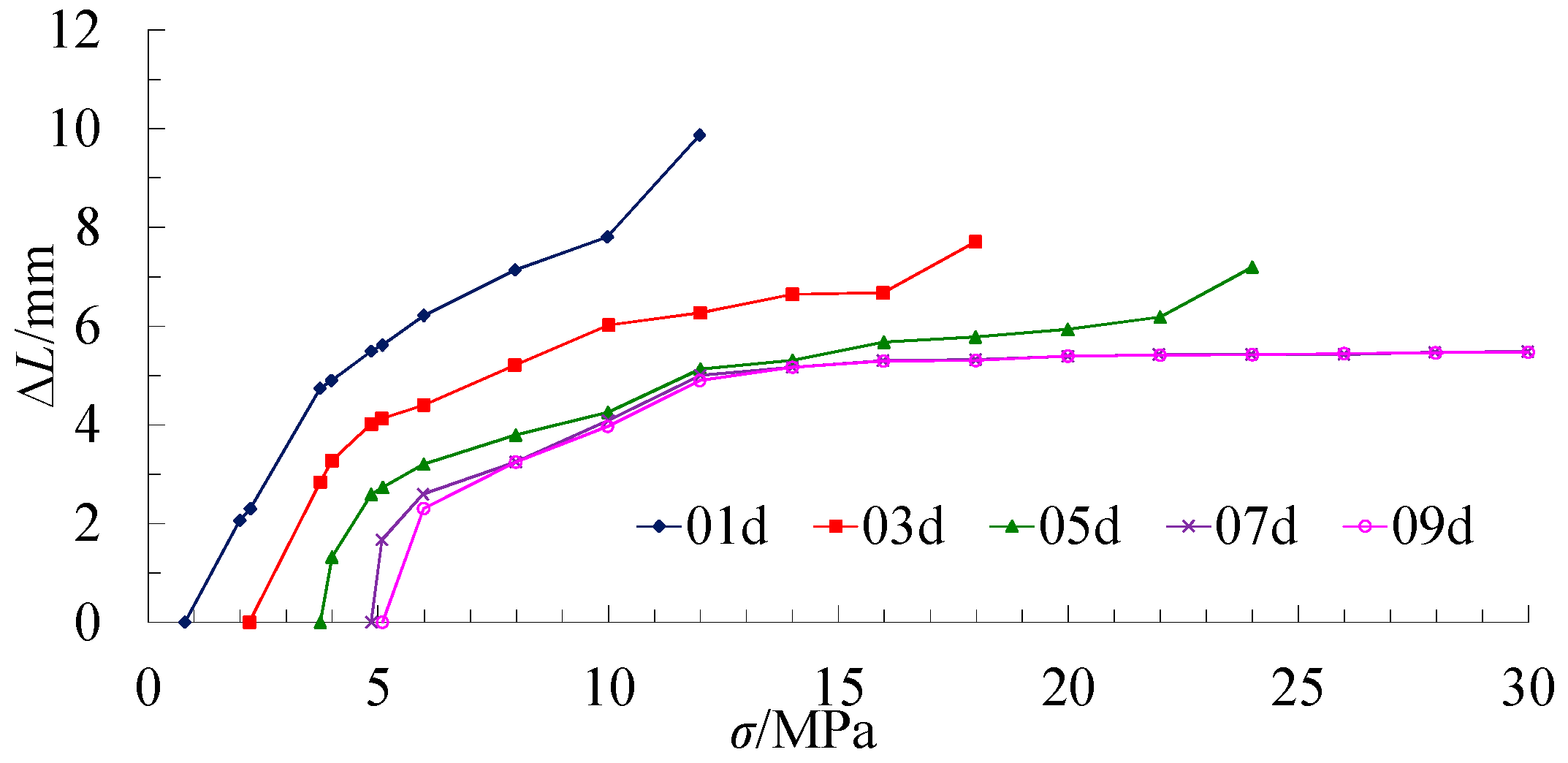

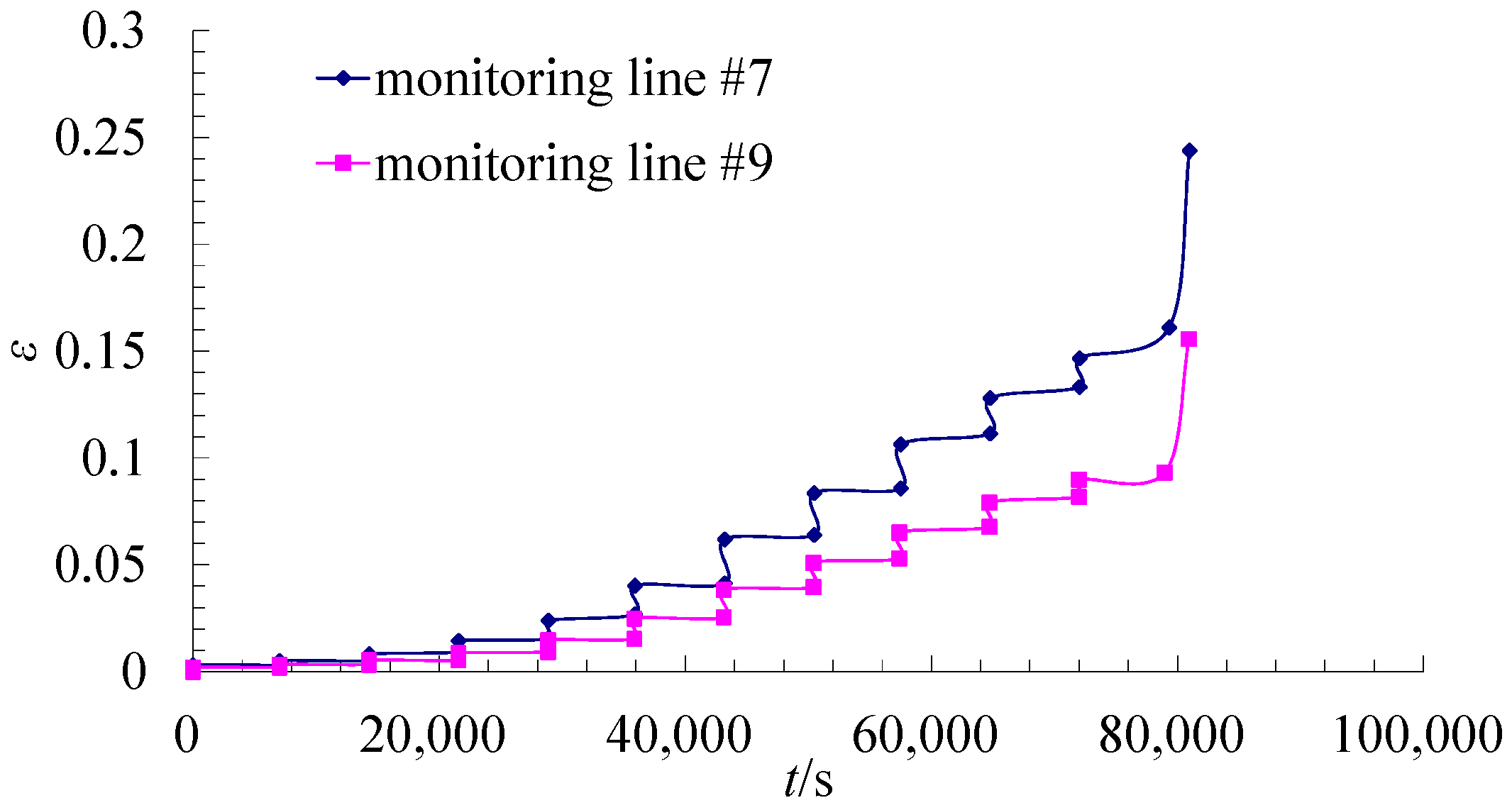
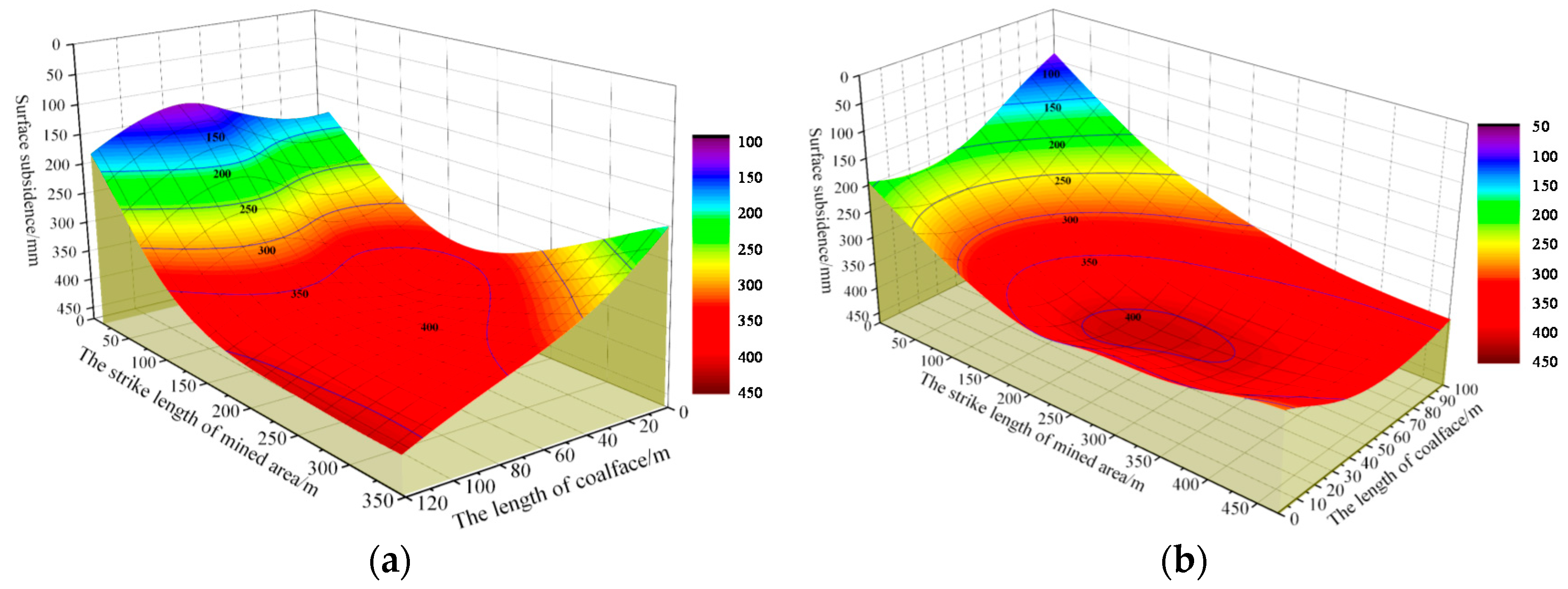
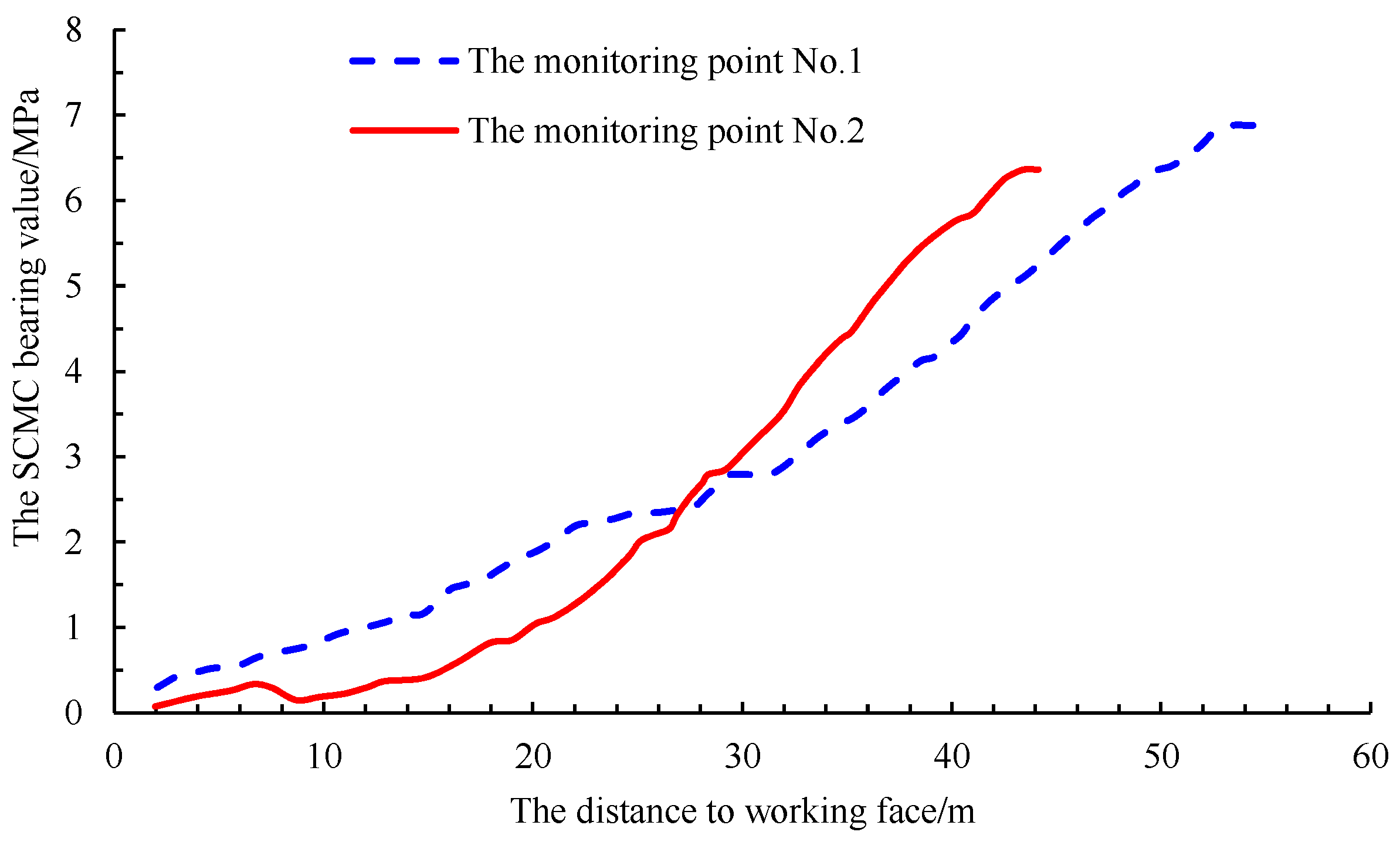
| Working Face | No. 1 BF | No. 2 BF | No. 3 BF | No. 4 BF | No. 5 BF | No. 6 BF | No. 12702 BF | No. 12706 BF |
|---|---|---|---|---|---|---|---|---|
| Backfill technology | open-type | pocket-type | open-type | pocket-type | open & pocket-type | open-type | pocket-type | pocket-type |
| Filling rate/(%) | 82 | 83.7 | 92.1 | 82 | 98.7 | 85 | 89 | 82 |
| Working Face | Maximum Surface Subsidence Values/mm | Filling Rate/(%) | Subsidence Coefficients |
|---|---|---|---|
| No. 6 backfilling face | 405 | 85 | 0.101 |
| No. 12706 backfilling face | 415 | 82 | 0.103 |
© 2017 by the authors. Licensee MDPI, Basel, Switzerland. This article is an open access article distributed under the terms and conditions of the Creative Commons Attribution (CC BY) license (http://creativecommons.org/licenses/by/4.0/).
Share and Cite
Wang, X.; Qin, D.; Zhang, D.; Sun, C.; Zhang, C.; Xu, M.; Li, B. Mechanical Characteristics of Superhigh-Water Content Material Concretion and Its Application in Longwall Backfilling. Energies 2017, 10, 1592. https://doi.org/10.3390/en10101592
Wang X, Qin D, Zhang D, Sun C, Zhang C, Xu M, Li B. Mechanical Characteristics of Superhigh-Water Content Material Concretion and Its Application in Longwall Backfilling. Energies. 2017; 10(10):1592. https://doi.org/10.3390/en10101592
Chicago/Turabian StyleWang, Xufeng, Dongdong Qin, Dongsheng Zhang, Chundong Sun, Chengguo Zhang, Mengtang Xu, and Bo Li. 2017. "Mechanical Characteristics of Superhigh-Water Content Material Concretion and Its Application in Longwall Backfilling" Energies 10, no. 10: 1592. https://doi.org/10.3390/en10101592





